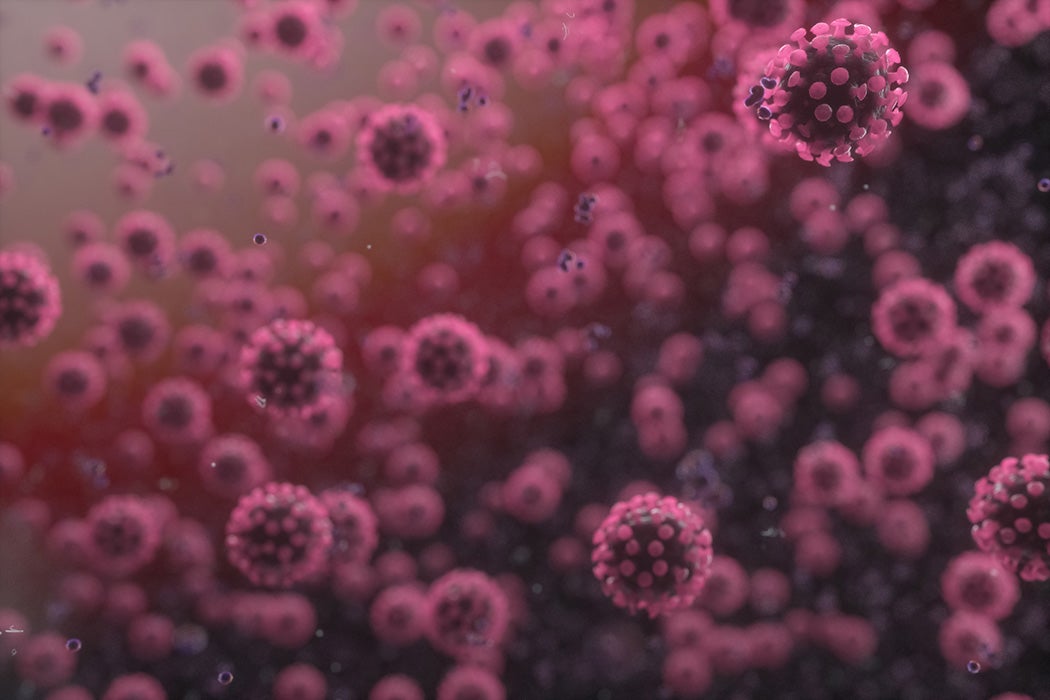The question of whether a virus is alive has puzzled scientists. Molecular biologist Luis P. Villarreal looks at changes in what they have thought over time. “For about 100 years,” he writes, “the scientific community has repeatedly changed its collective mind over what viruses are. First seen as poisons, then as life-forms, then biological chemicals, viruses today are thought of as being in the gray area between living and non-living.”
So a virus isn’t alive in any conventional sense of the word. But, argues Villarreal, “another way to think about life is as an emergent property of a collection of certain nonliving things.” Life and consciousness are his two examples of emergent complex systems. The brain can be kept functioning even if consciousness can not. Life “is made up of the same fundamental, physical building blocks that constitute a virus.” Looking at viruses this way means they can be thought of as being more than inert matter: not fully alive, but verging on life.
A virus—the word stems from the Latin for “poison”—is made up of nucleic acids (DNA or RNA) wrapped in a protein coat. That protein coat, or surface, is why soap is such an effective defense against them. The fats in this membrane are broken up and dissolved by soap, rather like grease is “cut” when you wash the dishes.
Viruses can only multiply by invading a host cell. Once a virus has entered a cell, it essentially hijacks the cell to make more viruses. These break out of the captured cell to invade others. The virus-cell relationship is parasitical, writes Villarreal: viruses “depend on the host cell for the raw materials and energy necessary for nucleic acid synthesis, protein synthesis, processing and transport, and all other biochemical activities that allow the virus to multiply and spread.” Without a captured cell, a virus can’t do these things.
Washing thoroughly with soap doesn’t “kill” viruses, because they’re not truly alive to begin with—at least they don’t have a cell structure or their own metabolism. The simple act of washing does, however, destroy them.
Weekly Newsletter
This is why, in defending ourselves against COVID-19, we’re urged not to touch our face: the hand can be a vector to the mouth, nose, and eyes. This particular coronavirus (there are hundreds of different kinds) happens to like the nose and throat—it becomes real trouble if the infection moves to the lungs.
“Viruses matter to life,” declares Villarreal, a “constantly changing boundary between the worlds of biology and biochemistry.” Though sometimes quite lethal, as our COVID-19 pandemic shows, they are perhaps key to understanding the origins of life in “nonliving” molecules.
You can read all our coverage of the coronavirus/COVID-19 outbreak for free. But please consider becoming a member on our Patreon page to support our nonprofit journalism.







